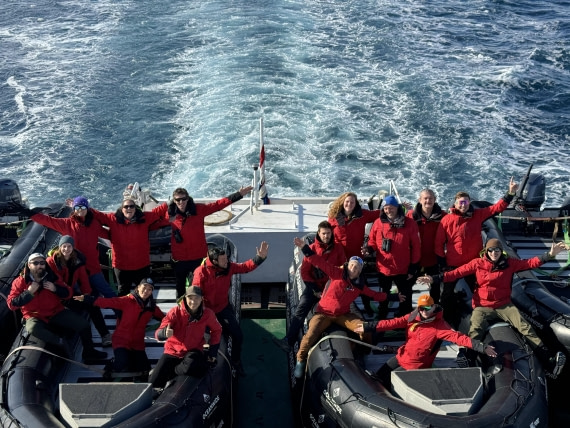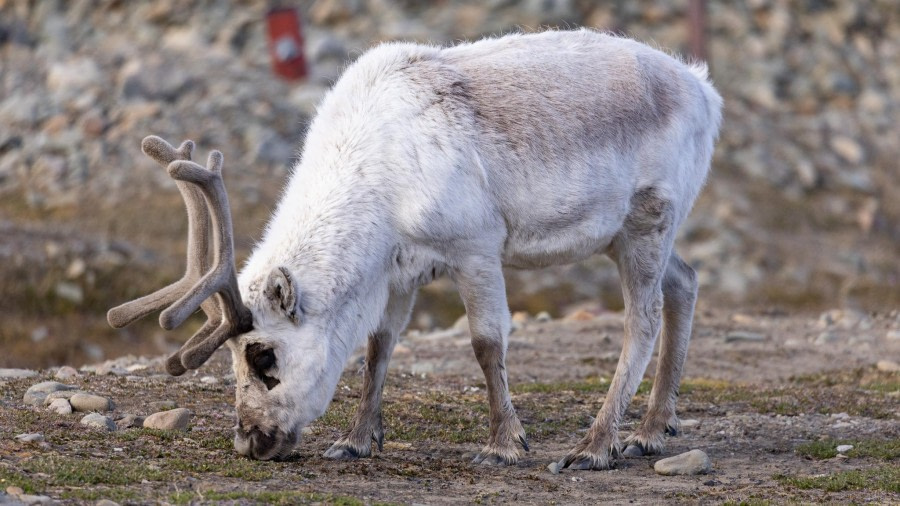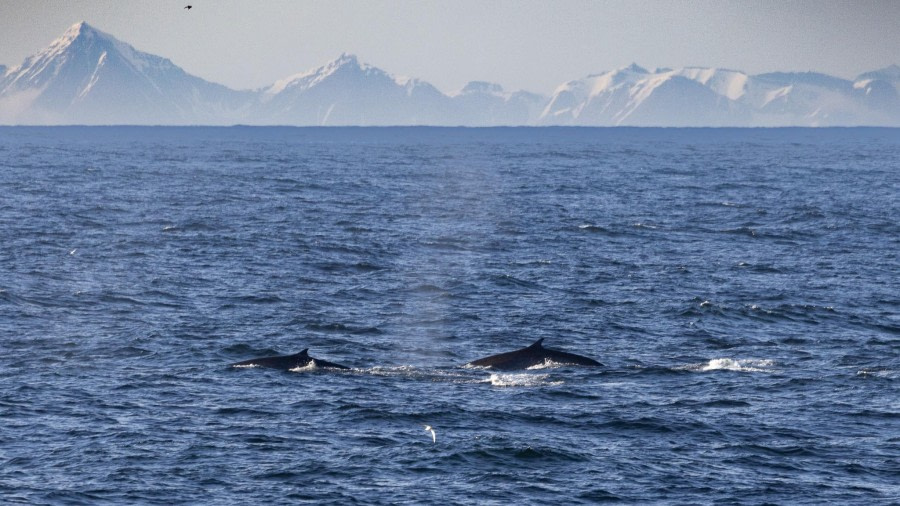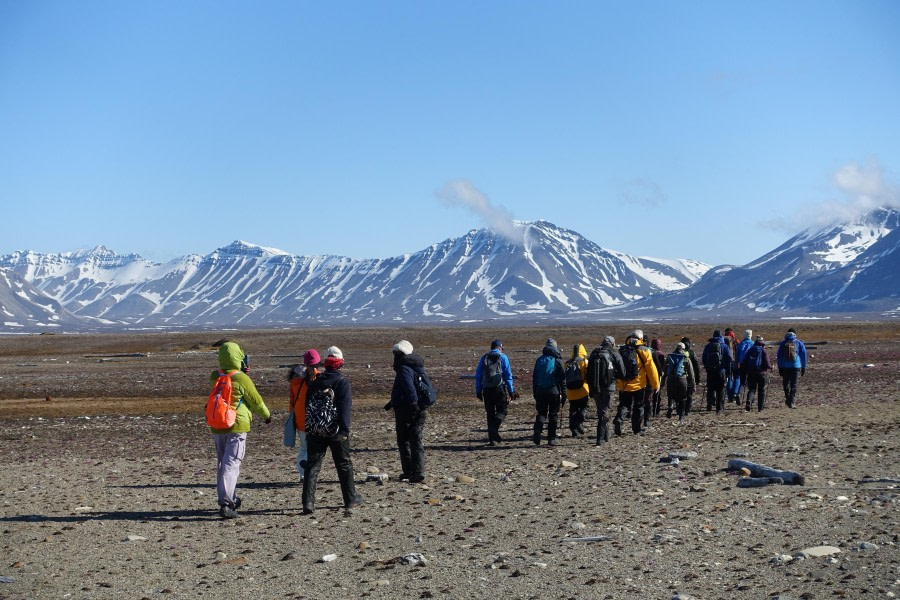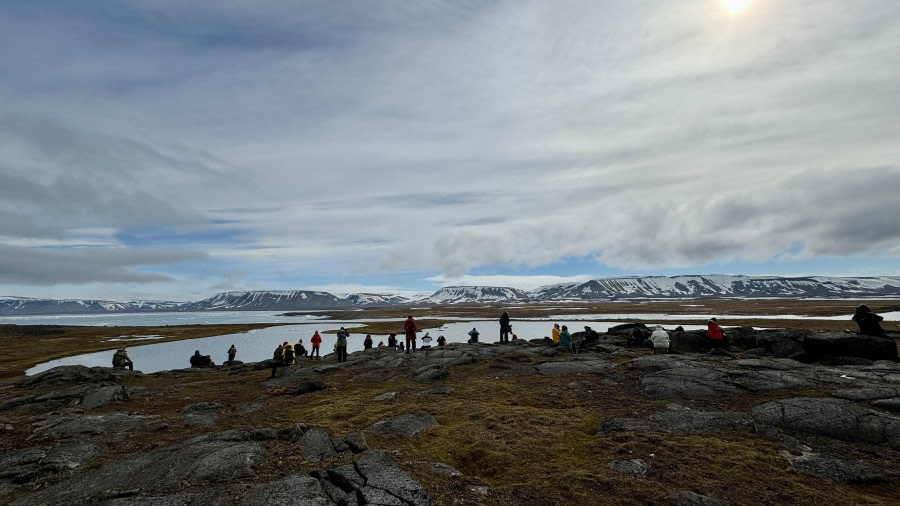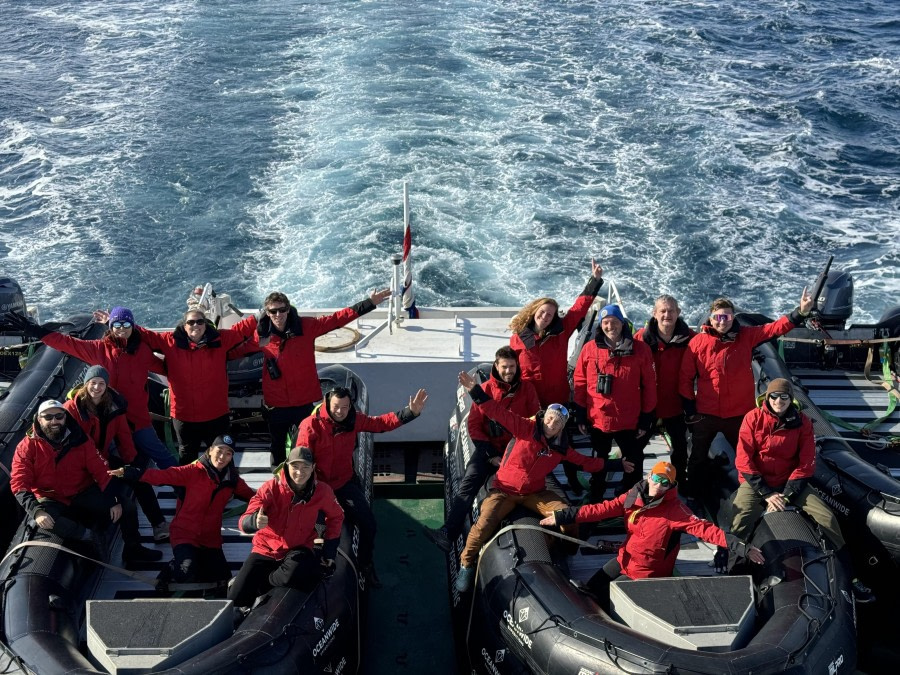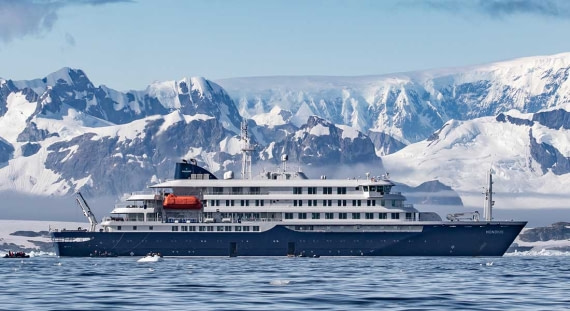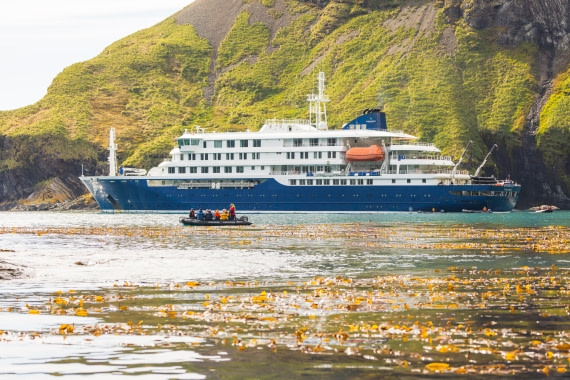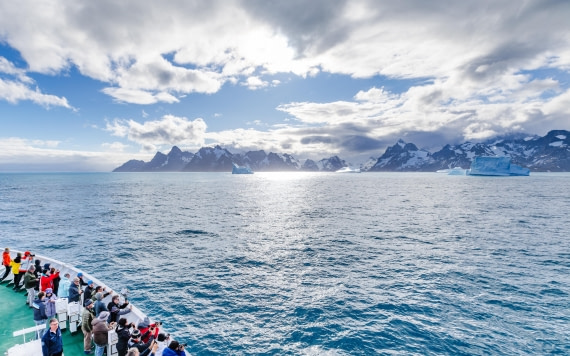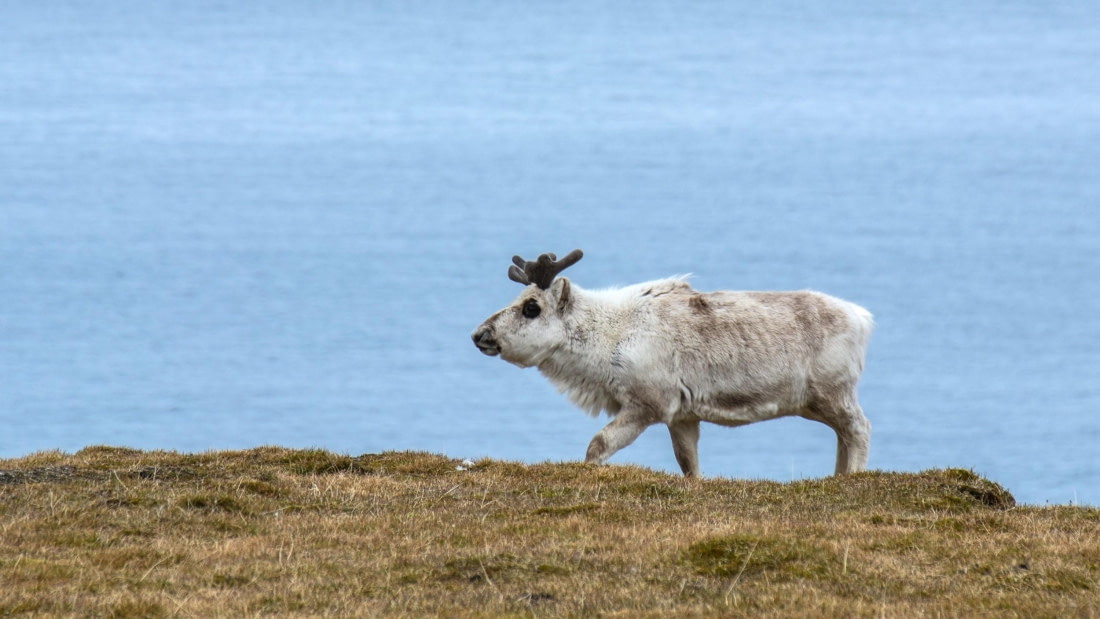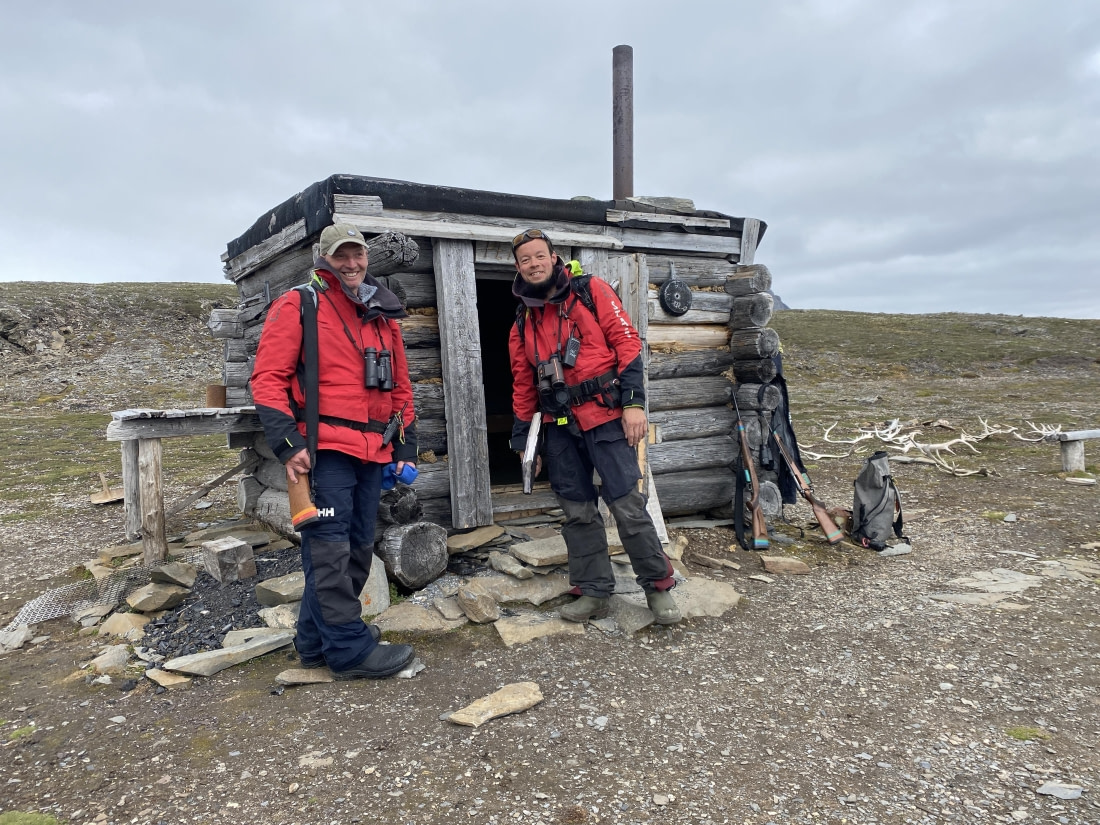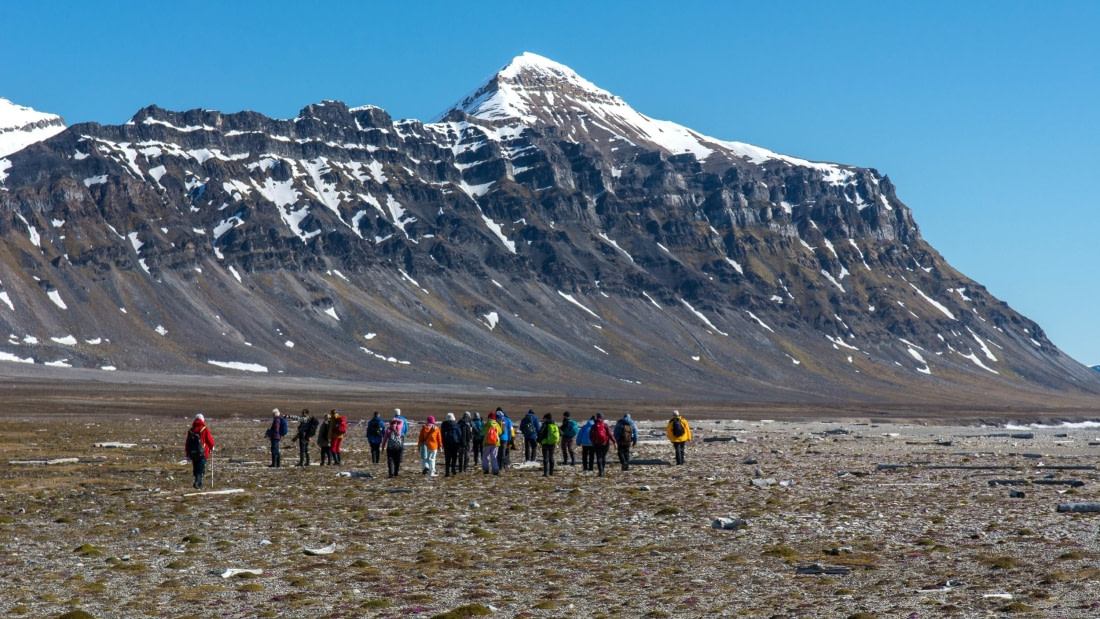| Fecha: |
22.06.2024 |
| Posición: |
77° 02,4' N 015° 57,5' E |
| Viento: |
E3/4 |
| Clima: |
Parcialmente nublado |
| Temperatura del Aire: |
+3 |
Al amanecer, el Hondius había navegado hábilmente durante la noche, llevándonos al extremo sureste del archipiélago de Svalbard, concretamente al sereno fiordo de Hornsund. El sol proyectaba un resplandor dorado sobre Burgerbukta, nuestro primer destino del día, perfecto para una exploración matutina con las zodiacs. Los excursionistas de largo recorrido comenzaron su caminata desde Morenenstranda hacia Tresklelodden, donde les recogeríamos por la tarde.
Después del desayuno, nos pusimos el equipo más abrigado, con el ánimo por las nubes y las cámaras fotográficas, dispuestos a vivir las aventuras del día. Nos recibieron las impresionantes vistas de los fiordos circundantes y, a medida que nos acercábamos al glaciar, nos aguardaba un espectáculo mágico: una manada de belugas deslizándose grácilmente por la orilla. Entre ellas, nos deleitamos viendo dos crías de color gris, distintas de las adultas de color blanco cremoso. El mero placer de ver y oír respirar a estas majestuosas criaturas era indescriptible, por lo que no era necesario fotografiarlas.
En lo alto de los acantilados, las gaviotas tridáctilas se elevaban hacia sus nidos, mientras que a nivel del agua, araos negros, araos de Brünnich e incluso algunos frailecillos nos encantaron con su presencia cercana. Nuestra exploración continuó hacia los majestuosos glaciares Paierlbreen y Mühlbacherbreen, rodeados de paisajes sobrecogedores. Un delicioso almuerzo, preparado por el Chef Ralf y su talentoso equipo de cocina, nos brindó la oportunidad perfecta para reflexionar sobre las maravillas de la mañana.
Mientras tanto, el Hondius zarpó hacia nuestro próximo destino: Gnålodden, uno de los lugares favoritos de muchos de nuestros guías. Un desembarco dividido y una conferencia a bordo de Gabi sobre la historia del oso polar en relación con los humanos, traducida por Rose, enriquecieron nuestros conocimientos y nuestra anticipación.
A medida que nos acercábamos al lugar del desembarco, nos sentíamos como en nuestro propio documental sobre la vida salvaje. El coro de las gaviota tridáctila llenaba el aire cuando entramos en la playa y sus gritos resonaban en los acantilados. Entre el paisaje rocoso, la cabaña de un trampero era un testimonio del pasado. Los acantilados rebosaban de gaviotas tridáctilas, araos de Brünnich y fulmares boreales. Donde hay aves, hay zorros, y tuvimos la suerte de ver a un zorro subir corriendo por las laderas, posiblemente en busca de su próxima comida.
Los excursionistas de largo recorrido, después de un día entero de caminata, también llegaron al mirador más alto, empapándose de las amplias vistas de Gnålodden, que nos había deleitado con su abundante vida salvaje y la floración de saxífraga púrpura en las laderas de la tundra, por lo que nos costó despedirnos de este hermoso paraíso.
La noche comenzó con nuestra recapitulación diaria, en la que el jefe de expedición Jerry esbozó los planes para el día siguiente. Kaitlyn aportó datos fascinantes sobre la vida de las belugas, y Meike compartió una emocionante historia sobre el ciclo vital de las gaviota tridáctila que habíamos visto en abundancia.
El día concluyó con una deliciosa cena preparada por nuestro chef favorito, Ralf. Satisfechos y agotados por un día lleno de exploraciones, nos anticipamos a una noche de sueño reparador, ansiosos por las aventuras que nos depararía el día siguiente.
Larga caminata
Hoy fue el primer día en el que pudimos terminar nuestra larga caminata tal y como habíamos planeado. Mientras contemplábamos el paisaje desde el barco por la mañana, aún teníamos algunas dudas de que la larga caminata tuviera lugar hoy. El paisaje seguía bastante nevado. Pero Marco y Philipp salieron a explorar como estaba previsto y un poco más tarde nosotros también estábamos en tierra. Empezamos la ruta con raquetas de nieve. Primero caminamos por la costa este de Burgerbukta y disfrutamos de una vista maravillosa sobre Hornsund. El tiempo es magnífico e incluso se ve la montaña Hornsundtind, de 1433 metros de altura, la más alta del sur de Spitsbergen. De vez en cuando nos tomamos un descanso para que Marco o Philipp pudieran explorar más adelante. En uno de esos descansos vimos una Yubarta. Durante la pausa para comer vimos incluso algunas ballenas beluga. Recorrimos los siguientes kilómetros sin raquetas de nieve, por lo que avanzamos más rápido. El siguiente descanso lo hicimos en una vieja cabaña de tramperos en Adriabukta. Después subimos hasta la cresta de morrena de Treskelen, que se adentra en el Hornsund.
Desde aquí disfrutamos de una maravillosa vista sobre el salvaje paisaje alpino de Hornsund. Poco después llegamos a Tresklelodden y nos recogieron las zodiacs de seguridad que nos habían acompañado todo el tiempo. Fuimos tan puntuales que pudimos reunirnos con los demás en Gnålodden.




